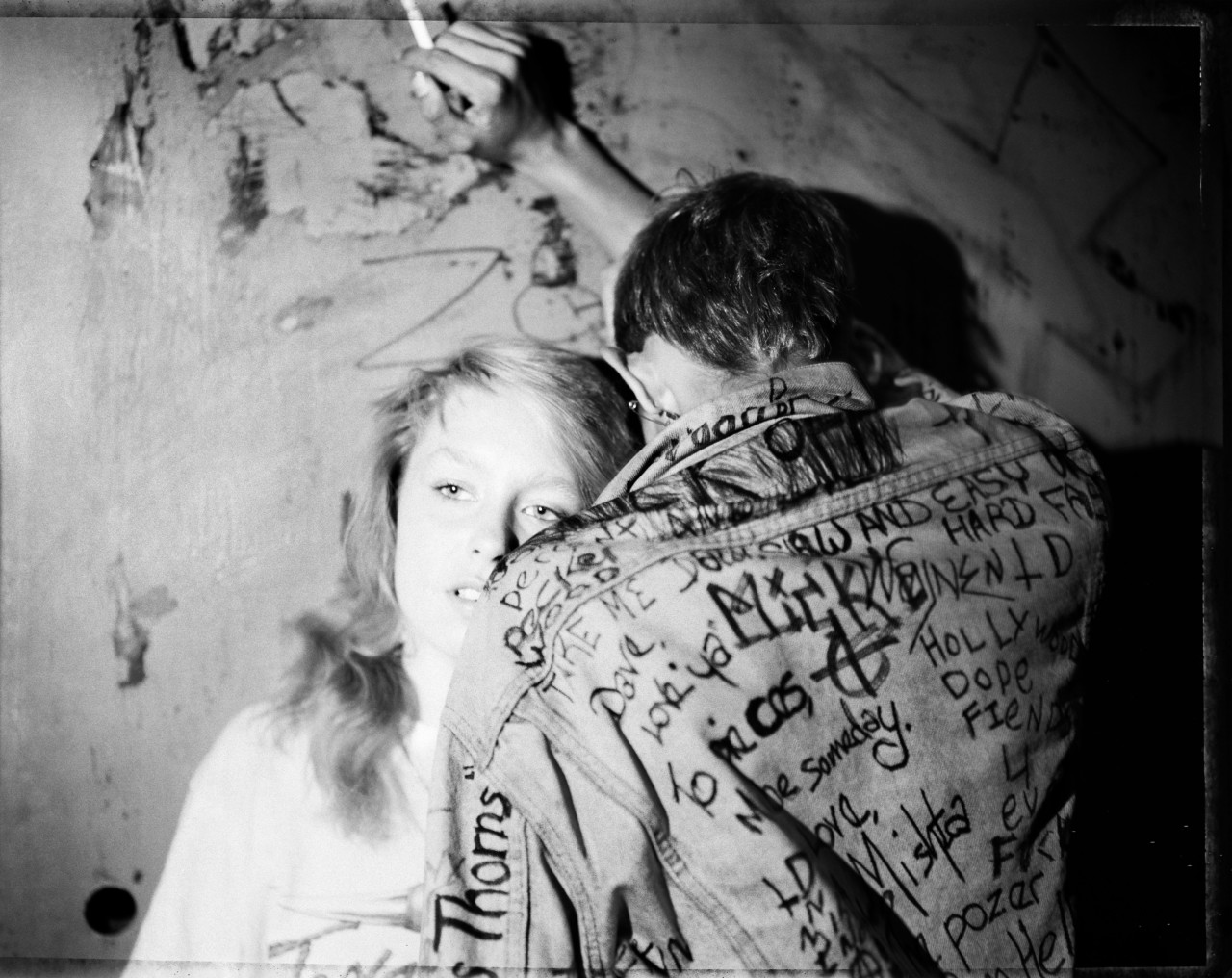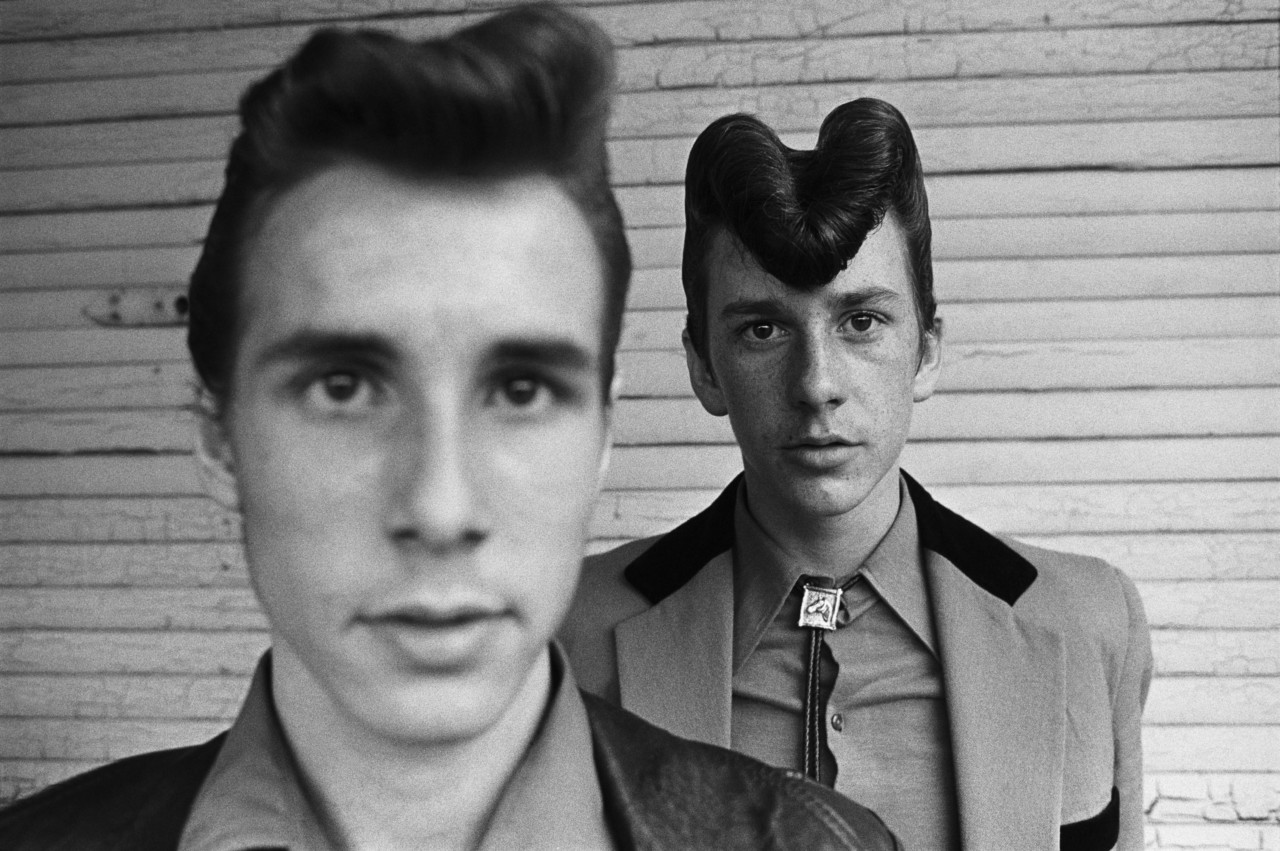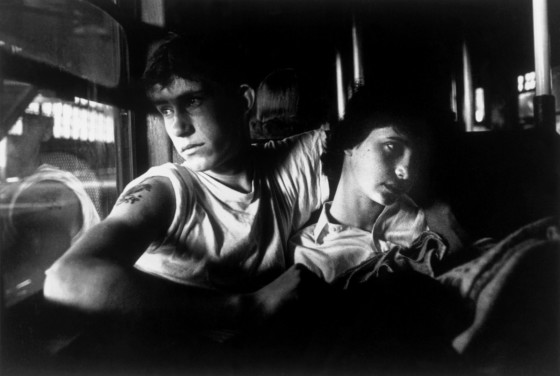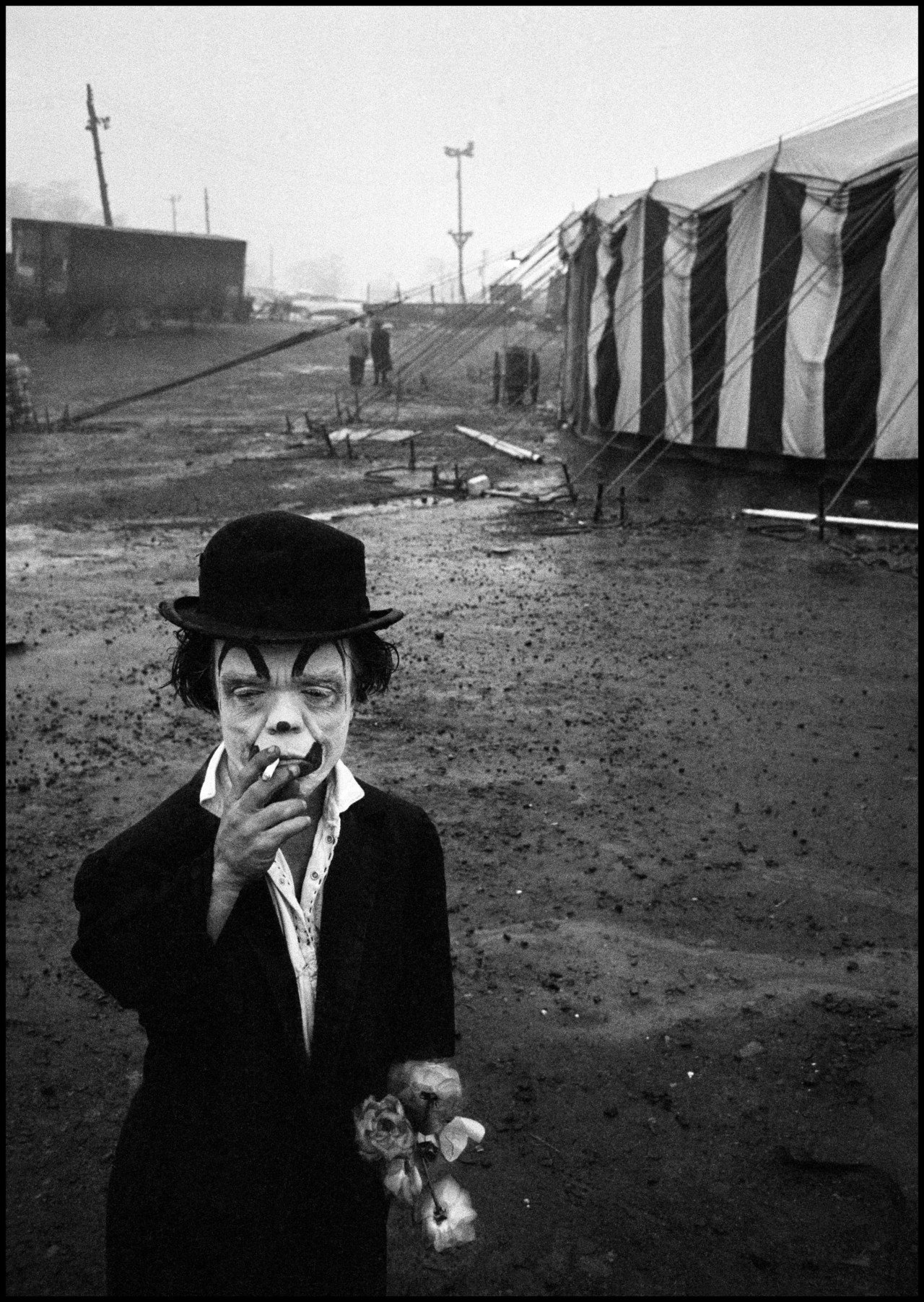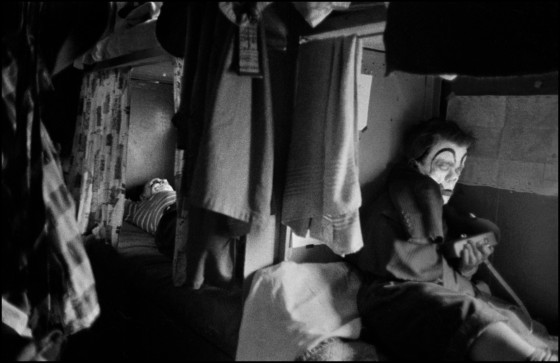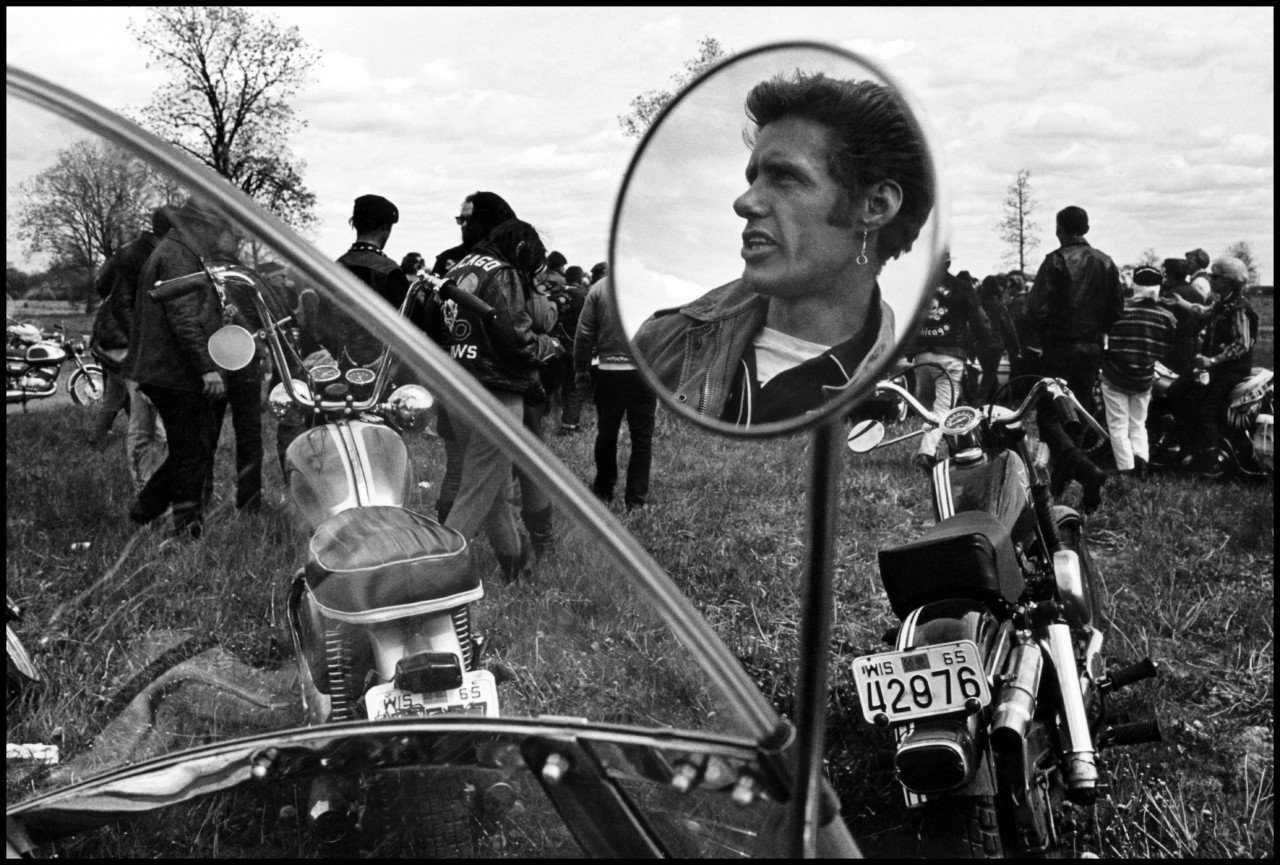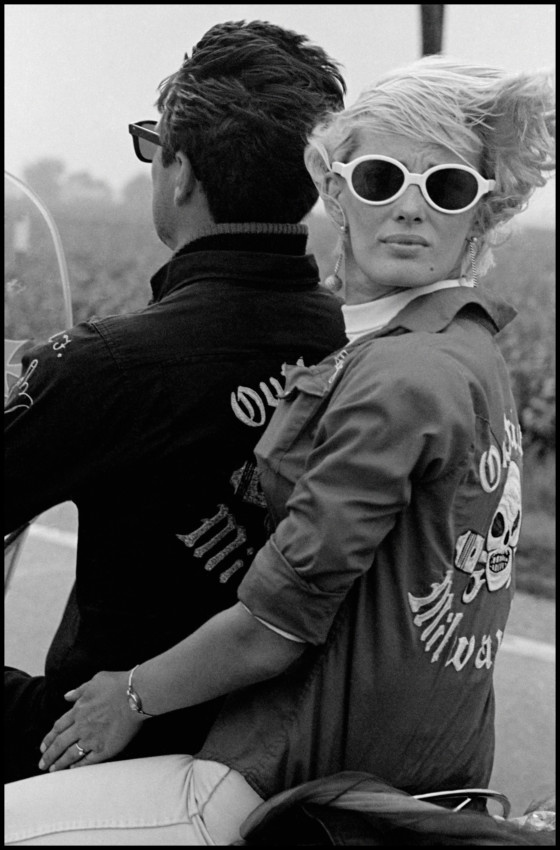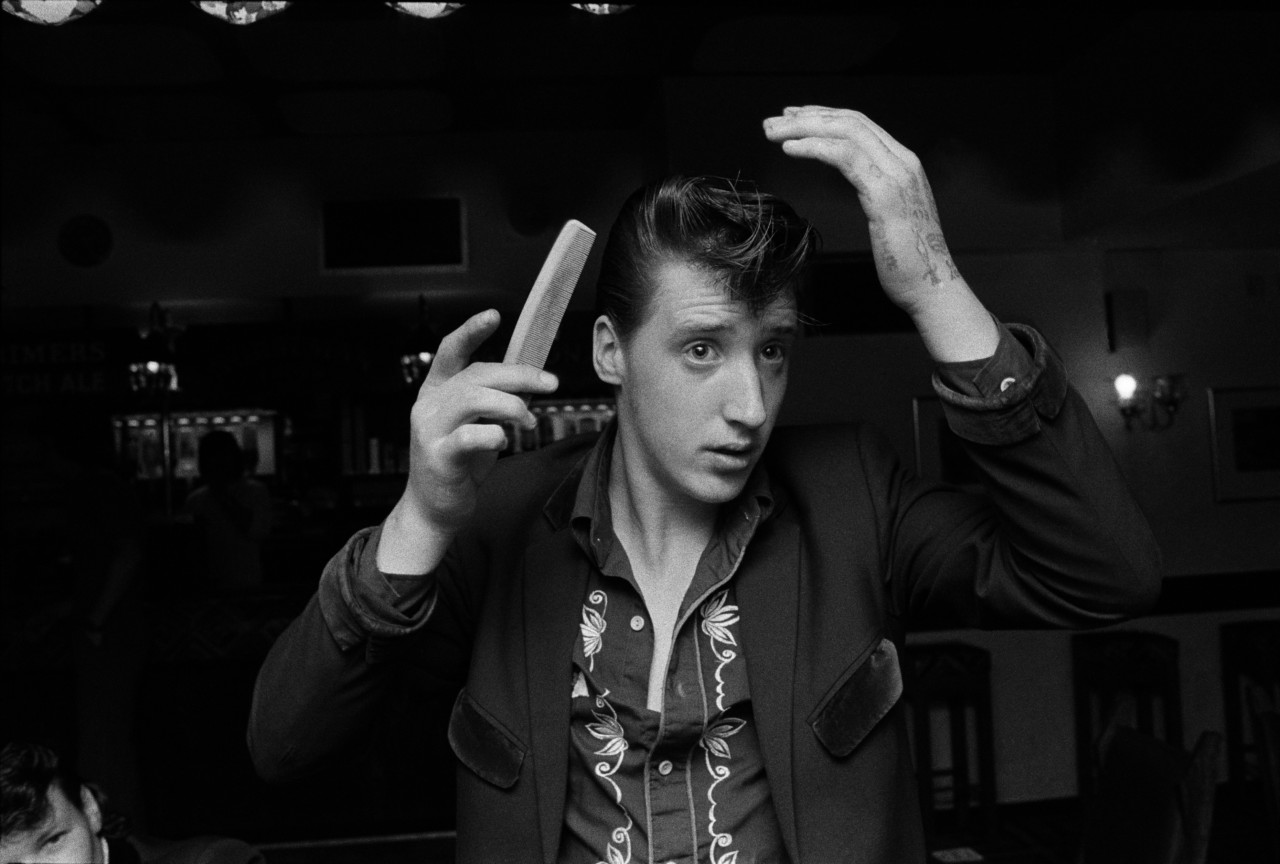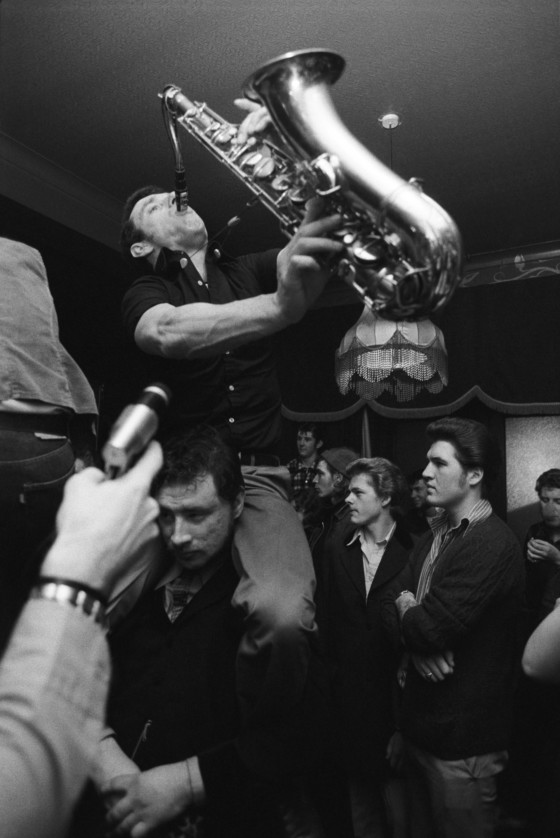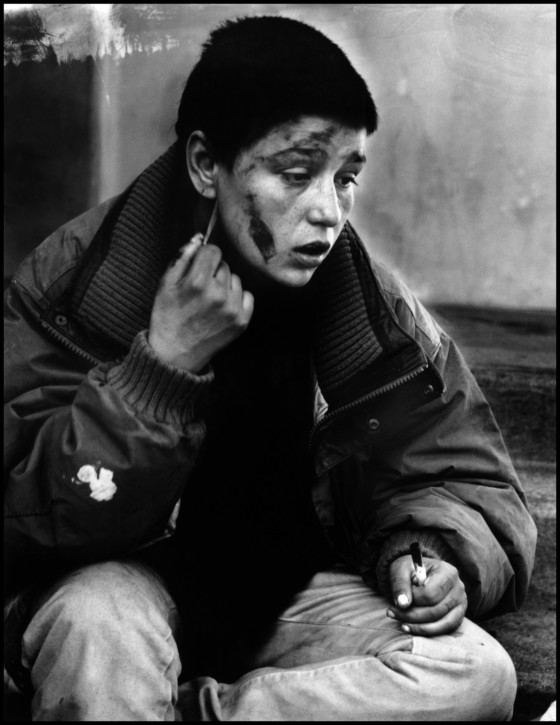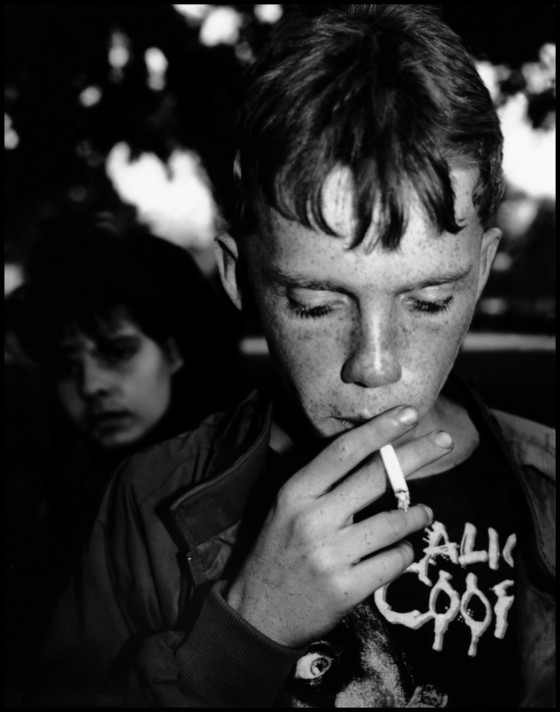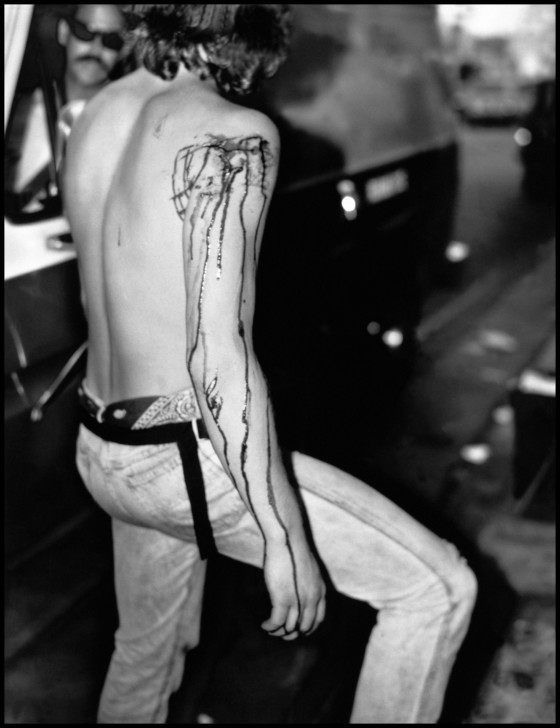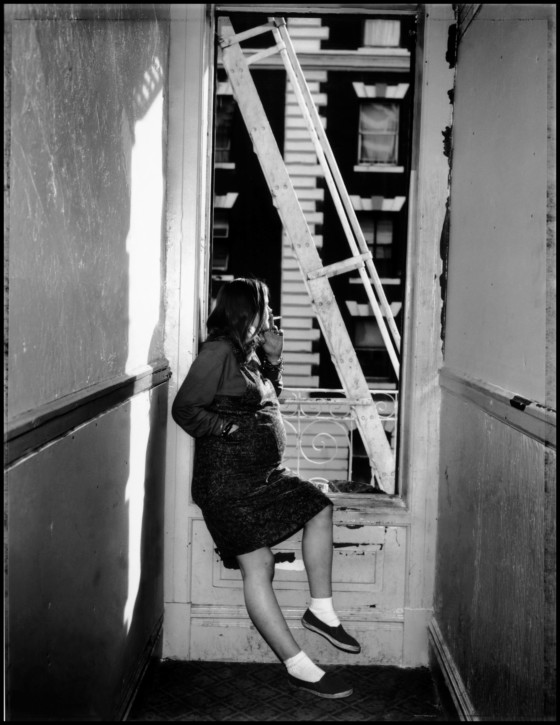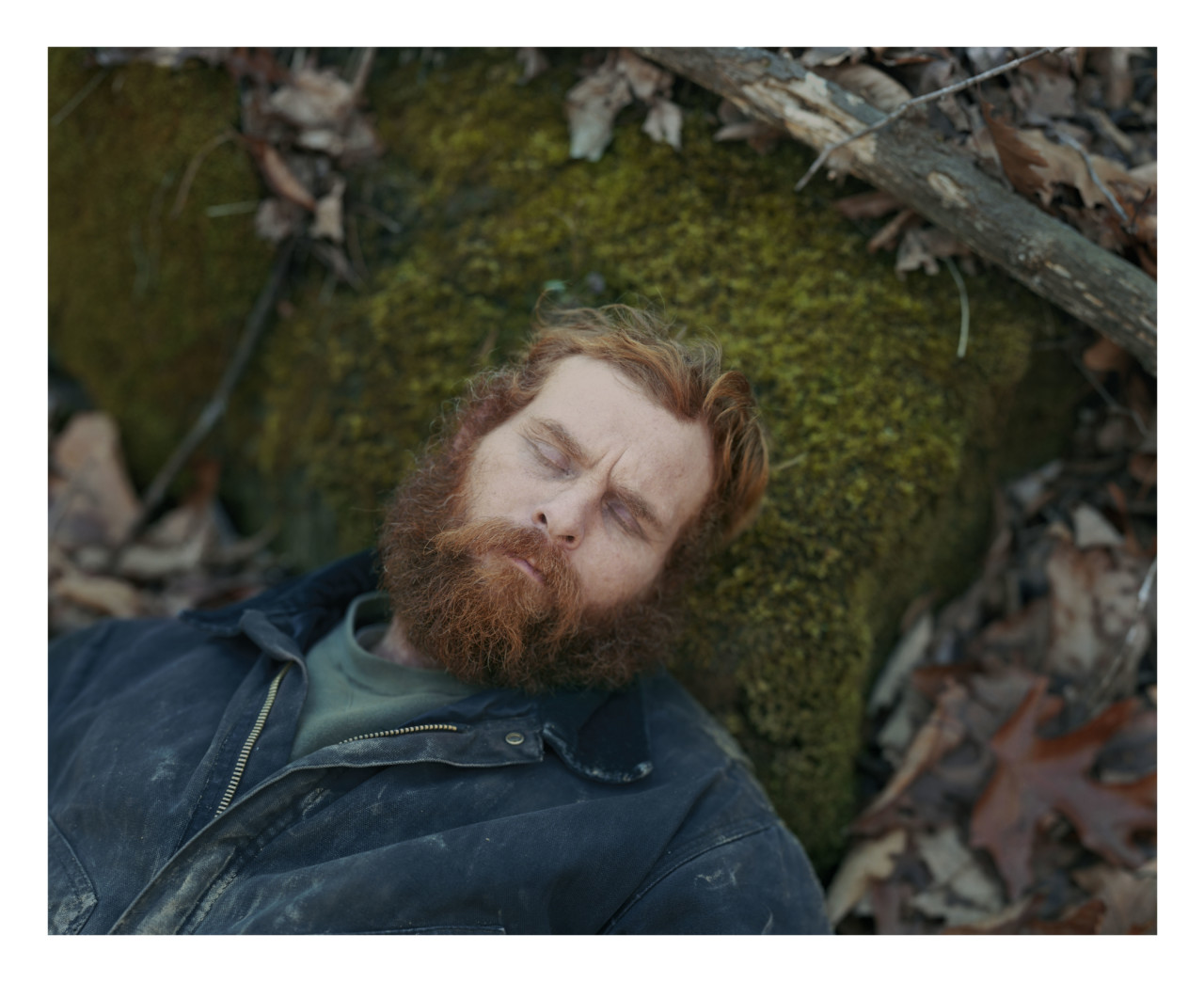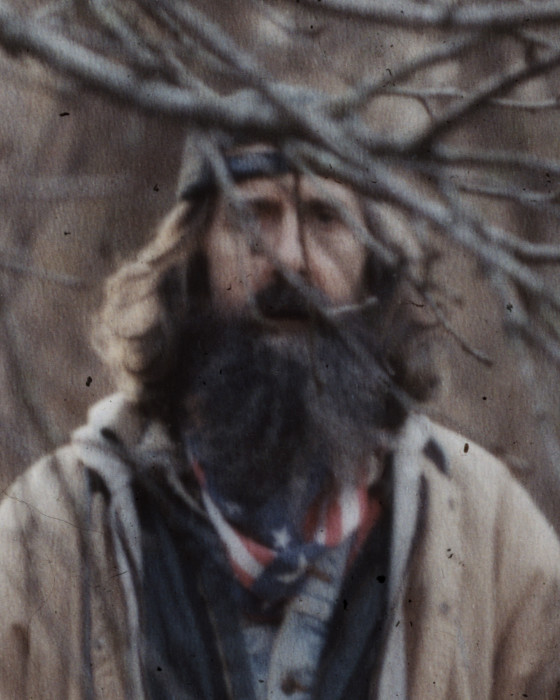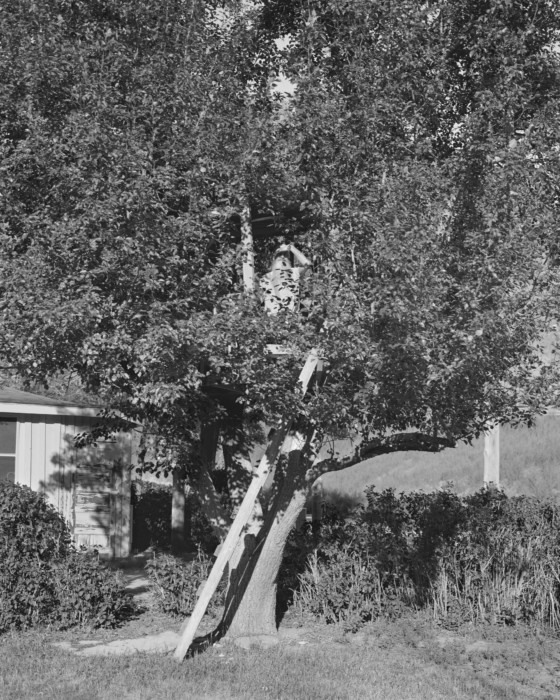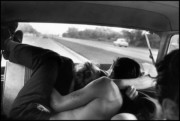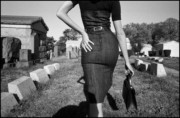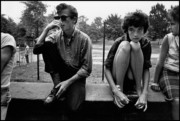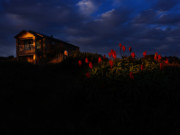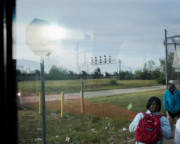Another Kind of Life: Exploring Photography from the Margins of Society
A new exhibition at the Barbican delves into the lives of people living beyond conventions
Magnum Photographers
The Barbican’s latest photography show, Another Kind of Life, is a blockbuster curation that explores the lives of those living on the fringes of society. The exhibition presents portraits of the lives of individuals and communities from America to India, Chile to Nigeria, and reflects a more diverse, complex view of the world, as captured and recorded by photographers.
Featuring communities of sexual experimenters, romantic rebels, outlaws, survivalists, the economically dispossessed and others who openly flout social convention, the works present the outsider as an agent of change. From street photography to portraiture, vernacular albums to documentary reportage, the show includes the work of Bruce Davidson, Jim Goldberg, Chris Steele-Perkins, Alec Soth, and Danny Lyon, as well as the Casa Susanna Collection, Paz Errazuriz, Pieter Hugo, Mary Ellen Mark, Dayanita Singh, Larry Clarke and many more.
Ahead of the exhibition opening, Magnum spoke to Barbican curator, Alona Pardo, about navigating the curation with sensitivity.She sought to explore how photography has represented groups on the edges of society, and its role as a medium in both documenting and defining them – “how photographers have captured, witnessed, participated in the lives of these communities, individuals and outsiders and what was that relationship between photographer and those communities.”
For Pardo, the starting point of building a show that documents communities of outsiders began with revisiting the work of Diane Arbus and Bruce Davidson and their influence. “It’s inconceivable to think about contemporary practice without going back to those founders of the modern period,” she says. “Thinking about their relationship between photographer and subject, it was contrary to what everyone thought about Diane Arbus.” Pardo is referring to the criticism Arbus has faced for her portraits of marginalized people — dwarves, giants, transgender people, nudists, circus performers.
In a 1973 article for The New York Review of Books, Susan Sontag criticized what she viewed as Arbus’s “anti-humanist” approach, arguing that the photographer presented “a world in which everybody is an alien—hopelessly isolated, immobilized in mechanical, crippled identities and relationships.”
"It's inconceivable to think about contemporary practice without going back to those founders of the modern period"
- Alona Pardo
Pardo disagrees. “Actually she had a very engaged participation,” she says. “She morphed from curious outsider to privileged insider at some point even if only momentarily.” Pardo’s curation thus sought to ask, “what was the influence of that work, and how did that change photography? If you look at Arbus or Davidson, they were working in a time where they were pushing the doors slightly, and now it’s been swung wide open, so photography has become more brutal, more direct. There’s less sentimentality around it.”
Davidson’s work features prominently in the exhibition, including his photos of gangs of teenagers roaming the streets of Brooklyn and Coney Island and his behind-the-scenes look at the Clyde Beatty Circus in New Jersey. His pictures of dwarf Jimmy Armstrong, are an uncomfortable reminder of the ‘freak show’ status those born with dwarfism had to endure, with circuses providing one of the few ways to earn an independent living.
“Bruce Davidson is the most obvious, and an early, example of someone who has immersed himself with the subject and that has been integral to his process. But equally, we can go further to the approach of Jim Goldberg and the way he invites his protagonists to construct their own narrative. They’re in very complicated positions as photographers, assuming the role of confidante and friend, and they transgress the line between photographer as an outsider,” Pardo says.
“I first saw Jimmy outside of the circus entrance; There was a slight mist and Jimmy stood there in a kind-of Charlie Chaplin Top Hat,” says Davidson, recalling his first encounter with his famous subject. “I didn’t want to photograph him just as a clown, I wanted to photograph him in his inner life. I think because I stood there respecting his space and not clicking away with my camera he opened up to me. The next several weeks I went and toured around with the Clyde Beatty Circus and our relationship developed. It is important to have a respect for your subjects, and build a relationship before photographing.”
"The next several weeks I went and toured around with the Clyde Beatty Circus and our relationship developed. It is important to have a respect for your subjects, and build a relationship before photographing."
- Bruce Davidson
Danny Lyon’s photographs of the Outlaw motorcycle gang of the mid-1960s is also showing at the Barbican in an installation that includes audio previously unheard in the United Kingdom. The photographer was also very much on the inside of the world he photographed. Lyon went to a meeting of the Outlaws in a bar and one of them asked him to join the club. “I’m very friendly — I did,” Lyon told Magnum in a previous interview.
“Only he could do that because he had unfettered access into what was essentially quite a private world,” says Pardo. “These photographers have stepped across the threshold and have been embraced and welcomed, but they also adapt to that lifestyle, and that’s absolutely critical, because authenticity is a very difficult word in photography. But there is a certain authenticity of representation that happens when photographers spend that much time immersed in a world.”
Danny Lyon’s Outlaws, and Bruce Davidson’s Brooklyn Gang of the late 1950s are also symptomatic of another post-war cultural shift – the advent of ‘the teenager.’ “Teenagers are central to the exhibition, and they symbolize this dissatisfaction with the post-war world,” says Pardo. Chris Steele-Perkins’ portraits of London’s second wave of the teddy boys – Teds – is included in the Barbican curation, as is Philippe Chancel’s multi-ethnic Parisian teen street gang, the Vikings. Other examples of teen gangs in the exhibition include Larry Clark’s documentation of young people in Tulsa, Oaklahoma, first published in 1971, and Jim Goldberg’s seminal Raised by Wolves. “The show is about trying to escape social conventions at the time, either through gender identify or lifestyle, and not wanting to be confined to a particular way of life.
Jim Goldberg’s groundbreaking work Raised by Wolves captures the disturbing lives of teens living on the streets of Los Angeles and San Francisco between 1987 and 1993. The body of work comprises a combination of photographs, video stills, found documents, and handwritten texts by the subjects themselves — creating a scrapbook of their lives. At its heart, it is a compassionate and moving study of adolescent life in America, of displaced and misunderstood youths. It reveals the reality of living on the streets — where teens are vulnerable to drug addiction, violence, and exploitation, and are all the while longing for happiness.
"It’s such a complex, ambitious, multi-layered work, that is difficult to show"
- Alona Pardo
“It’s such a complex, ambitious, multi-layered work, that is difficult to show,” says Pardo. In the Barbican show, it will be displayed in an installation made up of prints, videos, vinyl, and vernacular objects, including the denim jacket belonging to central character Tweaky Dave, which was given to Goldberg in 1990 before the photographer became the executor of Tweaky Dave’s estate after his death in 1997.
“It was a jacket that he had worn on the street and that other people had written on, or he had written on, or the girl who he was in love with, Echo, might have worked on. It was definitely street wear. It was signage of what they were thinking, what stories were in their lives and their minds, of being on the street, of being rebels, punks,” Goldberg told Magnum.
"Part of my work is social practice, working with the communities to do the work, together."
- Jim Goldberg
For Goldberg, whose practice involves writing text onto photographs and collecting objects around a narrative, the jacket is just as vital an element to Tweaky Dave’s story as the photographs. “Part of my work is social practice, working with the communities to do the work, together. That jacket is really an artwork made by street kids, and worn by Tweaky Dave. The fact that it was given to me is another way of disseminating what that jacket is about to other audiences, which I think that Dave knew I could do, or would do. He wanted his story, their stories, to be heard. He was very intelligent and succinct and was able to be a spokesperson for a group of people that had fallen through the cracks.”
In addition to vernacular items, Another Kind of Life also uses vernacular forms of photography to bridge a gap in the history of documentary photography, particularly in regard to the telling of the history of the trans community. Casa Susanna was a little-known refuge for a burgeoning group in the 1950s and 1960s in the Catskills, New York. It offered a safe space set in 150 acres for people to forge their identifies far from prying eyes.
“They had cameras and they would photograph themselves, so for them photography played this instrumental role in helping them affirm their identity, “explains Pardo. “These images were disseminated amongst the trans community, which was beginning to emerge across the US. It’s a family album of sorts. It’s integral to its history, of which a visual record is scarce.”
"This is a longing I've had for as long as I can remember. This project was definitely a way for me to come to terms with that."
- Alec Soth
In a flea market, antique dealer Robert Swope happened upon three albums consisting of around 400 prints; he quickly recognized their importance. The lack of representation of the trans community in photojournalism is indicative of their marginalized status. As the world of photography works to become more inclusive, archivists and curators are able to build their voices back into the historical document. “We want to create dialogue between art, politics and society, and we can do that through the representation of these different aspects of society to show that society is much more complex and it’s okay to identify with the struggles,” says Pardo.
One departure from the theme of communities built on the margins of society is the inclusion of work by Magnum photographer Alec Soth. In his body of work Broken Manual, Soth explores the new lives forged by people opting out of society. “People want to disappear for different reasons. Some people are looking to escape something (family, the law, etc.), while others are looking to connect (with God, nature). But in both cases, I think there’s generally some sort of pain that motivates this response,” says Soth. “This project was less about the specific people that disappear than it was about the longing itself. This is a longing I’ve had for as long as I can remember. This project was definitely a way for me to come to terms with that.”
Having brought this multi-dimensional, multi-voiced, multi-media exhibition together, Alona Pardo hopes that it shows “how important the visual record is but also by looking at the visual landscape, how far we’ve come, and how far we have to go, and the role the photograph has in moving things forward.”
Another Kind of Life is at the Barbican in London from February 28 to May 27, 2018.


